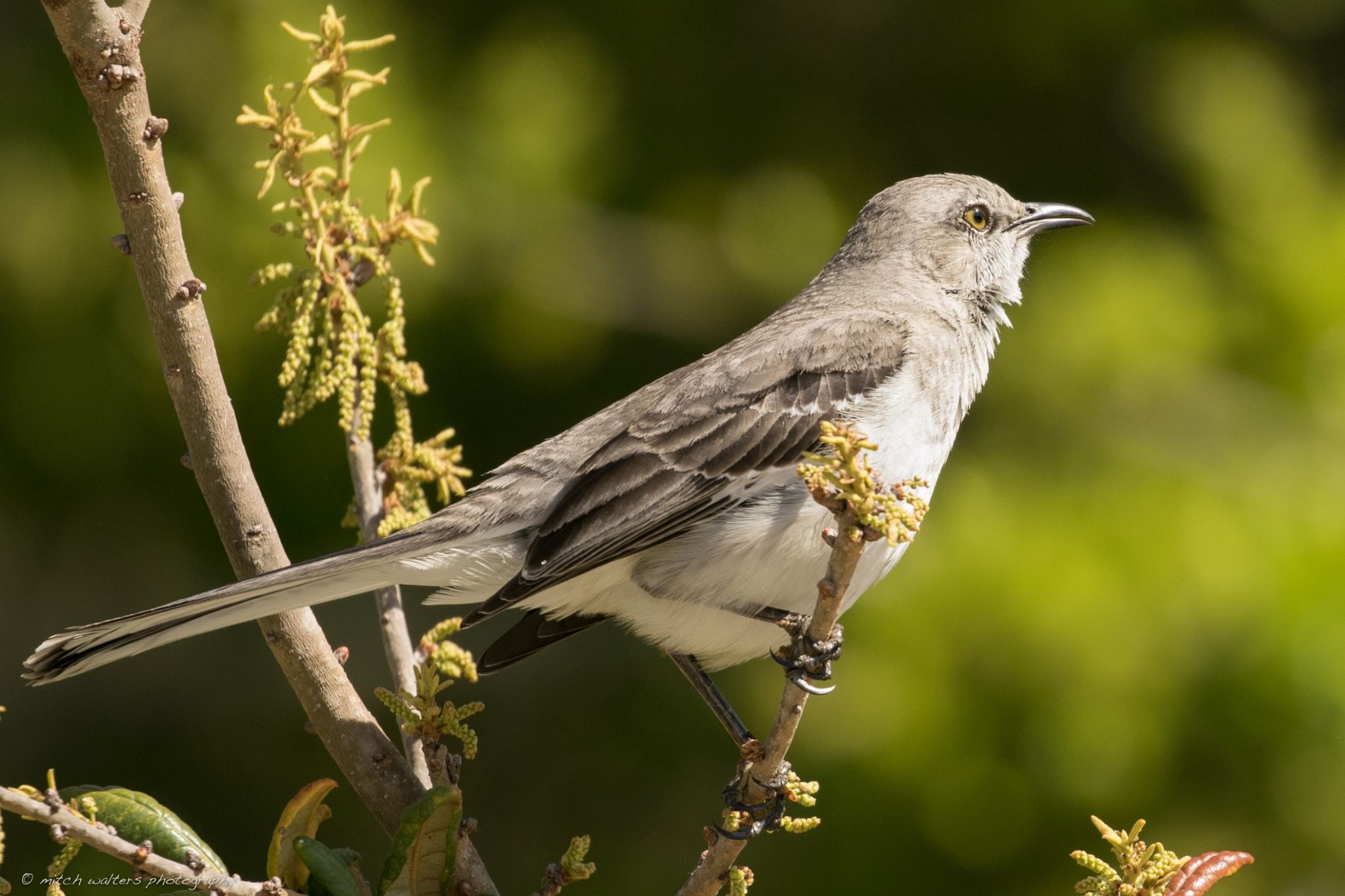Guest post by researcher Mitchell Walters
Linked paper: Urban background noise affects breeding song frequency and syllable-type composition in the Northern Mockingbird by M.J. Walters, R.P. Guralnick, N.J. Kleist, and S.K. Robinson, The Condor: Ornithological Applications.
Imagine having a conversation with someone next to a very busy intersection at rush hour. You can’t hear one another at a normal volume, so what do you do? You could talk louder, maybe wait for the noise to die down, or simply pick up your belongings and move to a quieter setting to converse.
Our research shows that if you’re a Northern Mockingbird, one of North America’s most famous avian songsters and the state bird of five U.S. states, you adjust to noisy settings by conversing at a higher pitch. Northern Mockingbirds’ songs are incredibly complex, made up of hundreds of different elements, and we also found that urban mockingbird songs include more high-pitched elements.
So why raise your pitch? Noise in urban environments overlaps most strongly with lower-frequency bird vocalizations, so mockingbirds may be increasing the pitch of their songs to avoid being drowned out by urban background noise. However, mockingbirds also love to mock things, so it’s possible that individuals mimic higher-pitched sounds more often in urban environments. In any case, the Northern Mockingbird is a great example of a bird adapting to urban habitat. Previous research in our lab has shown that not only is this species more abundant in urban areas, it also adjusts its nesting, foraging, and anti-predator behavior in these settings. The acoustic flexibility we found in our study may add to their ability to coexist with urbanization and people.
Because mockingbirds love to mock other bird species in their environment, it also makes sense to ask how much of a role surrounding bird communities play in the characteristics of their songs. This is important, because a male who’s a prolific impressionist may be very attractive to female mockingbirds. Future research aims to look at whether urbanization affects the quality of mockingbird songs via changes in bird diversity. If this is true, then human disturbance could be indirectly impacting the evolutionary trajectory not only of Northern Mockingbirds, but of other mimicking species as well.
When I started my master’s degree at the University of Florida, I actually had no intention of working with mockingbirds. I originally planned to do a project overseas, but my advisor and I quickly realized that was unrealistic. After a few mild panic attacks and brainstorming sessions I turned to urban ecology, a topic I had recently developed an interest in. Our lab had done long-term studies on urban mockingbirds, but no one had looked at what was, in my opinion, the most fascinating part of mockingbird life history — their songs. So the stage was set, the field gadgets were bought, and the grant proposals were accepted, sort of. After two years of blistering Florida summer heat and several strange encounters with locals asking what the heck I was doing with recording equipment, the project was complete and the results are now in! I just want to thank AOS for publishing my first first-author manuscript; it’s been an absolute pleasure working with this amazing journal.
